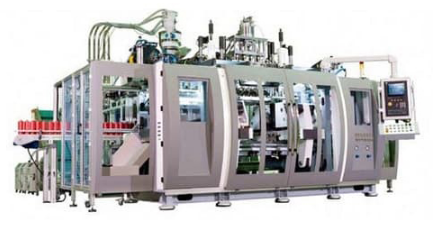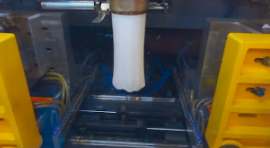The main problems with extrusion molding include melt fracture, die swell, inconsistent wall thickness, and poor surface finish.
Overview of Extrusion Molding
Extrusion molding, a manufacturing process, creates objects with a fixed cross-sectional profile. Manufacturers feed plastic in granular or powdered form into a heated barrel, melting it before forcing through a die to shape it. This method efficiently produces long, continuous products like pipes and tubes.

Definition and Basic Process
The choice of material is crucial in extrusion molding, affecting product quality and durability. Thermoplastics, commonly used for their ability to soften when heated and solidify upon cooling, suit this reshaping process well. The process starts with feeding raw materials into the hopper of an extruder, leading them to a barrel. Here, a rotating screw heats and melts the material. The molten plastic then passes through a die, shaping it as it cools and hardens. This method’s efficiency allows for production speeds up to 15 meters per minute, varying with material and product thickness.
Types of Extrusion Molding
Based on the extruder type or processed materials, extrusion molding falls into categories like single-screw and twin-screw extrusion. The simpler and cost-effective single-screw extruders suit most standard thermoplastics. Conversely, twin-screw extruders offer better mixing for complex materials or color blending. The choice depends on material properties, desired product quality, and production efficiency.
Materials like polyethylene (PE), polypropylene (PP), and polyvinyl chloride (PVC) are common in extrusion molding. Each offers unique characteristics, affecting the process efficiency and the final product properties. For example, PVC’s rigidity suits window frames and pipes, while PE’s flexibility is ideal for tubing.
Extrusion molding has advantages like continuous production and creating complex cross-sections. However, challenges include the high initial cost of machinery and the need for precise control over processing parameters.
For more information, the Wikipedia page on Extrusion provides detailed insights.
Material-Related Issues in Extrusion Molding
Impact of Material Properties
Material properties significantly affect the extrusion molding process’s efficiency and the quality of the final product. Understanding these properties is crucial for choosing the right material for specific applications.
| Property | Impact on Extrusion Molding | Typical Materials | Examples and Notes |
|---|---|---|---|
| Melting Point | High melting points require more energy, affecting production costs. | PE, PP, PVC | PE melts at 120-180°C, suitable for lower temperature extrusions. |
| Viscosity | Materials with lower viscosity flow more easily, impacting the moldability and final product quality. | Nylon, Polycarbonate | Nylon offers excellent flow characteristics, ideal for thin-walled products. |
| Thermal Stability | Better stability allows for a wider range of processing temperatures without degrading the material. | ABS, PET | ABS maintains stability up to 250°C, making it versatile for various applications. |
Challenges with Different Polymers
Different polymers present unique challenges in the extrusion molding process. Here’s a comparison of common polymers used in extrusion molding:
| Polymer | Advantages | Challenges | Common Uses |
|---|---|---|---|
| Polyethylene (PE) | Low cost, good chemical resistance | Susceptible to UV damage | Packaging films, containers |
| Polypropylene (PP) | High flexural strength, resistance to fatigue | Difficult to bond or print on | Automotive parts, textiles |
| Polyvinyl Chloride (PVC) | Good electrical insulation, flame resistance | Releases harmful toxins at high temperatures | Pipes, cable insulation |
Maintaining these machines and optimizing their performance is crucial for efficient production and minimizing downtime. For a deeper understanding, the Wikipedia page on Extrusion Molding offers comprehensive insights into the process and materials used.
Wear and Tear of Machinery
Key Factors Impacting Machinery Lifespan
Extrusion molding machines undergo significant wear and tear due to continuous operation. The lifespan of these machines is crucial for maintaining production efficiency and cost-effectiveness.
Frequency of Use: Machines running around the clock experience quicker wear, reducing lifespan.
Maintenance Routine: Regular maintenance can extend the machinery’s life, ensuring smooth operation.
Material Processed: Harder materials increase wear on the screw and barrel, leading to more frequent replacements.
Proactive maintenance and choosing the right machinery for specific materials are essential to mitigate these issues.
Precision and Control in Equipment
Achieving precision and control in extrusion molding equipment is vital for product quality and consistency.
Temperature Control: Precision in maintaining the material’s temperature, typically ranging from 150°C to 300°C, is crucial for consistent quality.
Speed Control: Controlling the screw speed, which can range from 10 to 120 RPM, impacts the final product’s properties.
Pressure Control: Maintaining consistent pressure, up to 30,000 psi, ensures uniform product thickness and density.
Investing in high-quality control systems enhances the precision of the extrusion process.
For a comprehensive understanding of the extrusion molding process and related machinery, the Wikipedia page on Extrusion Molding is a valuable resource.
Quality Control in Extrusion Molding
Defects and Variability in Products
In extrusion molding, addressing defects and variability is key to maintaining product quality. Common issues include:

Surface Imperfections: These often occur when material flow fluctuates or temperature varies beyond the optimal range of ±5°C. Implementing precise temperature control systems can reduce this type of defect.
Dimensional Inaccuracies: Dimensional variance can be as high as ±10% in less controlled processes. Regular calibration, maintaining extrusion speeds within a narrow range of ±5 RPM, can significantly improve accuracy.
Material Weaknesses: Impurities in raw materials or incorrect processing parameters can weaken the product. Testing raw materials to ensure less than 0.1% impurity and maintaining processing parameters within ±3% of the set values are crucial for strength and durability.
Implementing a rigorous monitoring system can reduce these defects by up to 50%.
Methods for Ensuring Consistent Quality
Effective strategies for consistent quality in extrusion molding include:
Automated Process Control: Modern systems can maintain temperature, speed, and pressure within ±2% of desired settings, leading to a 30% reduction in quality variations.
Regular Equipment Maintenance: Preventive maintenance can reduce machinery breakdowns by up to 40%, ensuring smoother operations.
Material Testing: Ensuring material consistency with less than 0.05% variation in key properties can improve product uniformity by up to 25%.
Incorporating these methods can enhance the overall quality of products by 35-45%.
For more detailed information about extrusion molding and quality control, the Wikipedia page on Extrusion Molding provides comprehensive insights.




